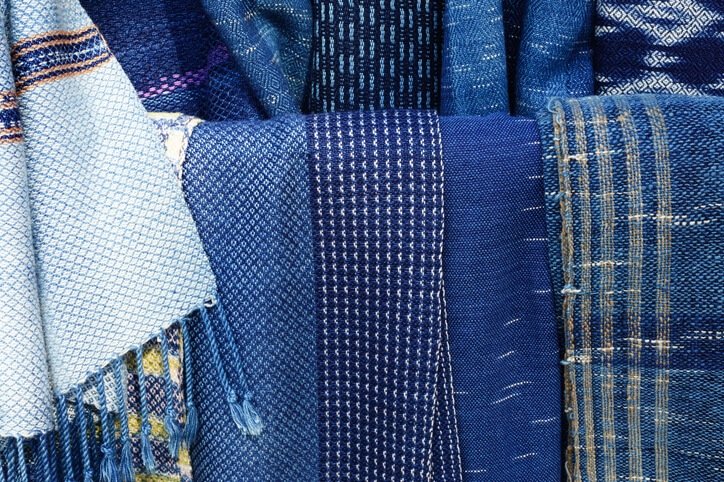Egyptians were all about ranks.
Kings, priests and peasants all were a part of a huge ranking system. There clothes, adornments and even the colors were to basically a signal for the ranks they had.
Indigo Colors
Purple, Blue, White: Royal and Noble
Brown: Peasants
Jewellry
Royal and Noble: Gold Silver and Precious Stones
Peasants and Commoners: Copper and Bronze
Now the purple and blues were rare colors in those times. And it was obtained from plants, this dye has been being used dating as far back as 2000 BC, found in mummies tombs in Egypt it was highly prized and used regularly as is today yet many people would not realize there wardrobe contains at least a couple of garments and the process has remained the same since these ancient times.
In the dying process, cotton and linen threads are usually soaked and dried 15-20 times. By comparison, silk threads must be died over 40 times. After dying, the yarn may be sun dried to deepen the color. Indigo is unique in its ability to impart surface color while only partially penetrating fibers.
INDIGO BENEFITS
1. Indigo is related to the brow chakra or the third eye, which is located exactly at the centre of the forehead. The organs linked with this chakra are eyes, lower head and sinuses, while its endocrine gland is the pituitary gland.
2. Indigo has a calming and sedative effect and it is the color associated with self-responsibility, as well as with faith and trust in your intuition and instincts.
3. Some of the positive aspects of the indigo color (i.e. when the indigo color or the brow chakra is balanced) include: high intuition, imagination, faithfulness, fearlessness, loyalty, empathy, devotion to duty, and being practical, idealistic and wise.
Use and wear indigo when:
- You feel anxious and frustrated;
- When you need to calm your nerves;
- When you have troubles falling asleep;
- When you have hearing problems;
- When you have headaches;









